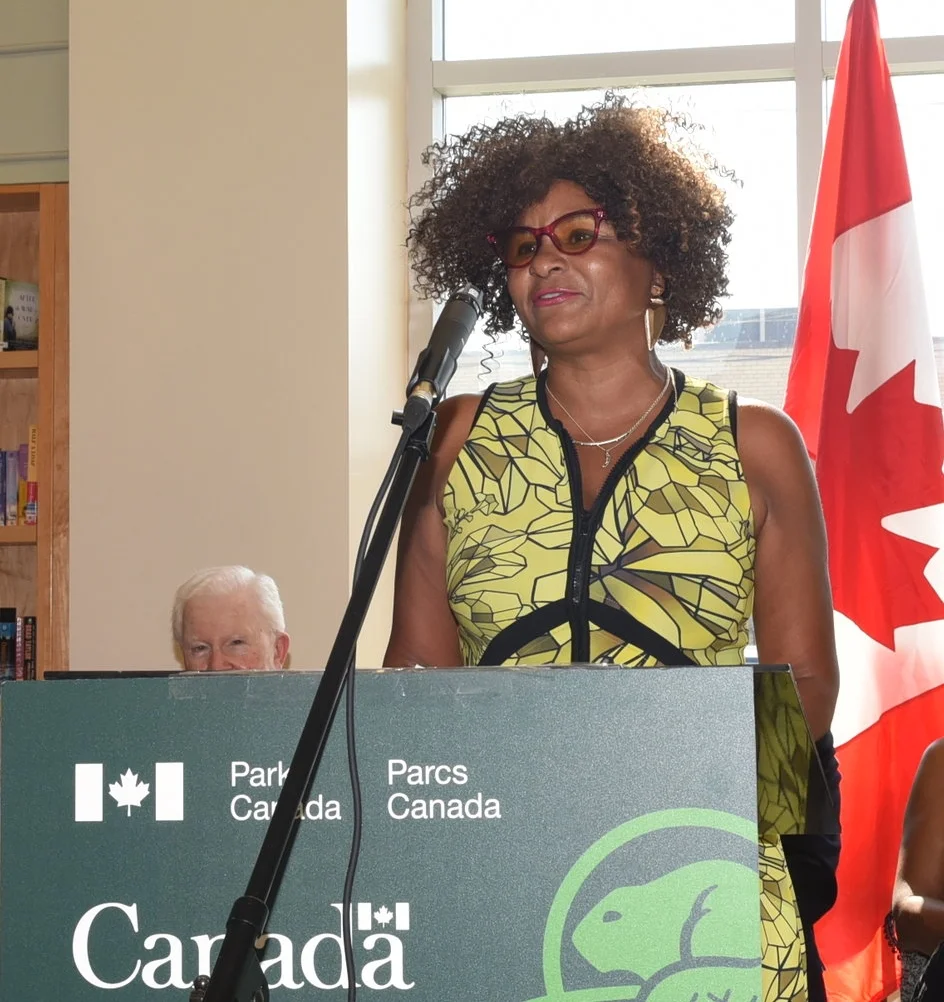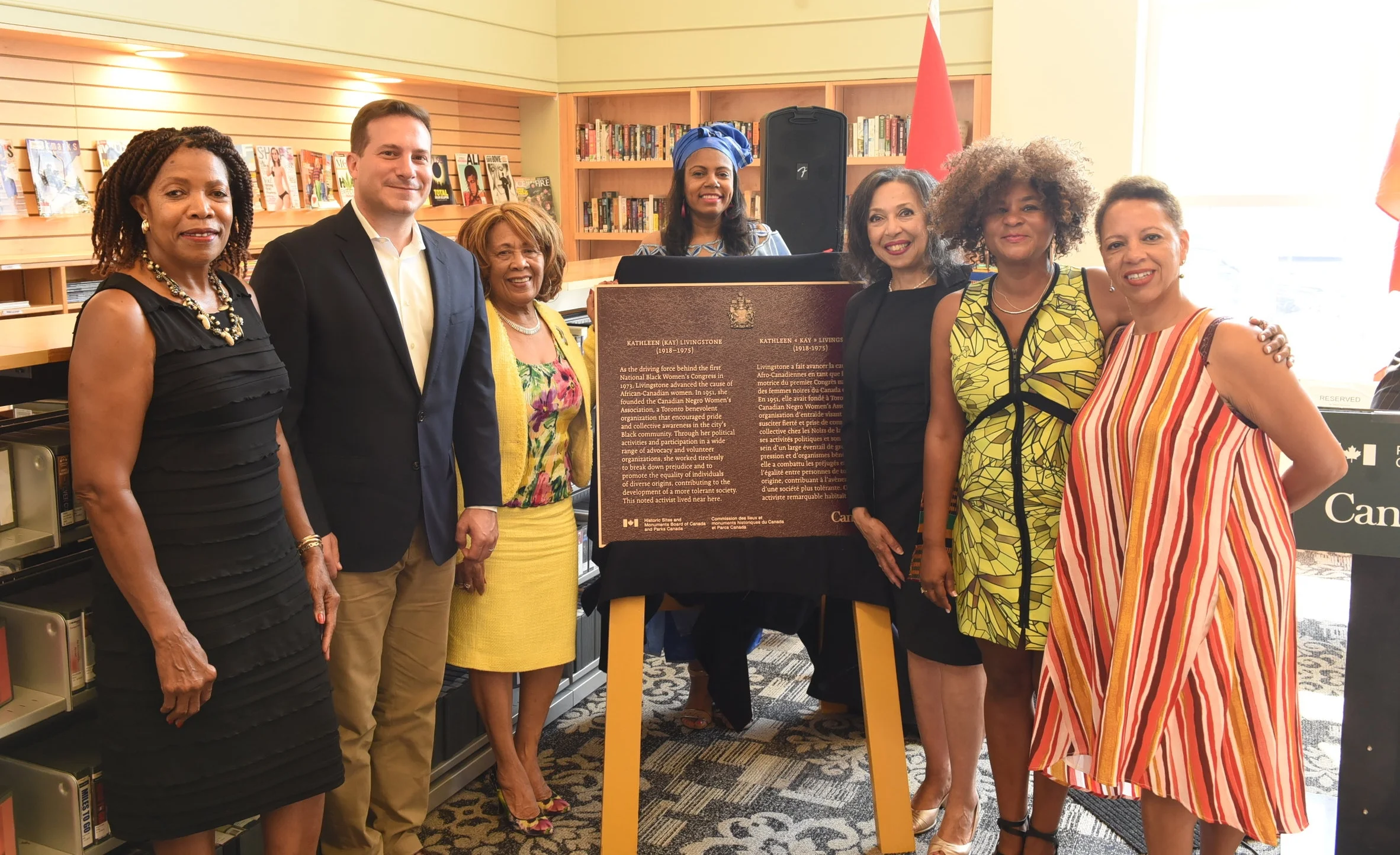Kay Livingstone is person of national historic significance
September 28, 2017
Rene Livingstone was just 15 years old when her mother, Kathleen “Kay” Livingstone, passed away suddenly in 1975.
The women’s right advocate, who headed the Canadian Negro Women’s Association (CANEWA) and was the driving force behind the first National Black Women’s Congress in Toronto in 1973, was designated a person of national historic significance six years ago.
The plaque unveiling ceremony took place last Sunday at the Toronto Public Library Barbara Frum auditorium.
“Truthfully, I didn’t pay much attention to what my mother did,” said the youngest of five siblings. “I was just a kid. All I knew was that she was going here and going there meeting people. It’s only when I became an adult did I fully start to understand what she did and what she meant to so many people.”
Born in London, Ontario, to parents who published one of the province’s earliest Black newspapers, ‘The Dawn of Tomorrow’, Livingstone studied at the Royal Conservatory of Music in Toronto and at Ottawa’s College of Music, engaged in horseback riding for relaxation and was employed with the Dominion Bureau of Statistics in Ottawa during World War II.
Her interest in the performing arts led to a position as host of a community radio program featuring music and poetry, and later as the host of CBC Radio’s ‘The Kay Livingstone Show’, exploring the traditions and cultural activities of Blacks around the world and promoting an understanding of the contributions of Blacks to Canadian society
Livingstone also served as president of the Dilettantes – a women’s social club – that became CANEWA and morphed into the Congress of Black Women (CBW) Canada and the United Nations Association in Canada Toronto branch women’s section; the YWCA local council international affairs chair; the National Black Coalition regional chair and a member of the Women’s Advertising Club and the Appeal Board of Legal Aid.
At the time of her sudden death while returning from a trip to Mexico, she was a consultant to the Privy Council.
Rene Livingstone recalled the busy life her mother, who was one of Canada’s leading Black actresses in the 1940s, led.
“She was taking phone calls, going off to meetings or holding meetings at our home,” she added. “I remember when the ladies came over for meetings at the home, they would sit around the kitchen table and they would talk, plan and laugh. When 9 o’clock bedtime came, the ladies were still hard at work. Me and my older sister Kathy (Payette) would be in bed and we would hear the sounds of laughter and voices which were like a lullaby lulling us all to sleep. Our phone rang constantly and my mother told us it was very important to take messages. She would leave a pen and paper by the phone and give us instructions to write down names and numbers.”
Created in 1919, the Historic Sites and Monuments Board of Canada (HSMBC) advise the Government of Canada, through the Minister of the Environment, on the commemoration of nationally significant aspects of Canada's history.
Following a thorough evaluation process and recommendation by the Board, the Minister declares the site, event or person of national historic significance.
“We are here to welcome Kathleen Livingstone, a remarkable leader in and of her community, a tireless advocate for equity, justice and understanding and someone who in her own time and since has earned the ultimate accolade, ‘she made a difference’,” said HSMBC chair Dr. Richard Alway.
“…What we are doing this morning is, I think, important to us as Canadians and as a people. Our own history and how we remember our past is important because it helps define the way we think of ourselves as a society. The straight fact is that history is to the nation as memory is to the individual. It gives meaning, context and identity. Without it, we simply can’t know ourselves. But using it as a common foundation, we can together look forward to building a future with confidence and a sense of expanding possibility.”
Marco Mendicino, the Member of Parliament for Eglinton-Lawrence, said the Canadian government is pleased to commemorate the national historical significance of Livingstone.
“We could not have asked for a more fitting setting, the former neighbourhood and city where she worked tirelessly to create a better community, a better city and a better country for all Canadians,” he said. “When I read through Kay’s background and her history, I was just completely struck by the giant status of this woman. She was an extraordinary figure who devoted her life to the advancement of the cause for African-Canadian women and men in an era that was strongly influenced by prejudice and racial insecurities.”
Loris Thomas (l), MP Marco Mendicino, Ettie Rutherford, OBHS first VP Kathy Grant, Rosemary Sadlier and Livingstone's daughters Rene and Kathy
Just over a decade ago, former Ontario Black History Society (OBHS) president Rosemarie Sadlier started the process to attain national historic recognition for Livingstone.
“This has finally happened,” she said. “You have chosen well.”
Sadlier said Livingstone informed and inculcated many seminal aspects of Black Canadian cultural life.
“Her example in many positions with the CBC through to the National Black Coalition of Canada and from acting through to her work on the Privy Council provided a path for others to follow,” said Sadlier. “Her ideas and her willingness to execute them became standard parts of the Canadian social justice and cultural landscape from the birth of the Congress of Black Women to the template for Caribana which is in its 50th year.
“For me, Kay is the reason there were so many dedicated communal women experienced in the ways of community organization who joined the OBHS and thereby guided my steps and encouraged me through the 25 years I volunteered with the OBHS.”
Retired school principal Ettie Rutherford led the charge for Livingstone to be accorded the national honour.
She founded the CBW York Region and Oshawa/Whitby chapters and has been an integral part of the national women’s organization for many years, serving as the Ontario region representative from 2005 to 2009.
Rutherford attended her first CBW conference in Winnipeg in 1980.
“I thought I had died and gone to heaven,” said the former national vice-president. “I lived in Alberta where you hardly saw another Black woman for four to six months and here I was in a hotel room with over 200 Black women from across Canada.”
Janet Collins, who is in her second two-year term as president of the CBW London chapter, attended the event.
“Kay was a visionary and someone who was tireless in the work she did to change the lives of women of colour,” she said. “What she recognized was that in the general dialogue that results in change on a big scale, the voices of Black women were muffled, if not missing.”
Loris Thomas, the regional representative for the CBW Ontario region, said the organization is proud to see Livingstone getting the recognition she deserves.
There are eight CBW chapters in the province.
In addition to Rene and Kathy, Livingstone’s other children – Hailey, George and Kory – were at the ceremony.
The plaque will be installed later this year at Bedford Parkette, 443 Bedford Park Ave. near the home where Livingstone resided.







